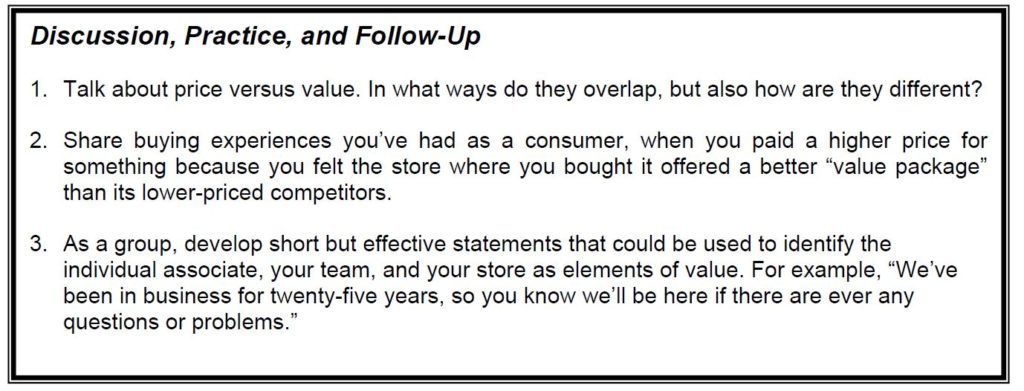Building Value Before Mentioning Price
Article provided for The Plumb Club by Kate Peterson, PC Performance Concepts

Raising objections is a normal part of the buying process for many people.
Objections are often buying signals, and they can give direction to a presentation by indicating issues that are important to the customer.
But there are things you can do to deal with some of the most common objections—particularly those concerning price—before they ever arise. Building a sense of value before you mention an item’s cost is one preventive measure that’s in your best interest, as well as the customer’s.

Kate Peterson
To use this technique effectively, you first need to give some thought to the concept of value. In many ways, value is a matter of perception. Of course, there’s a connection with price. But whether or not a particular item of jewelry has enough psychological and emotional value is what’s really at issue in many cases.
For that reason, you must establish—through your words and actions—the value of the item as it relates to the customer’s needs and desires. To do this, you’ve got to make good use of what you learn in the rapport-building and profiling steps of the selling process.
The value of any jewelry item goes far beyond the numbers written on the tag. Often without even realizing it, customers consider underlying issues such as your store’s reputation, its environment or ambience, and the other ingredients that go into the shopping experience. These include the services you offer and also the knowledgeable and friendly professionalism you and the rest of your team stand ready to provide. All of these factors contribute to customers’ perceptions that they’re getting excellent value for their money.
Your responsibility is not only to live up to customers’ expectations, but to exceed them. Customers’ appreciation of your store is a large part of building the value of merchandise you present. But it’s also only the starting point. Your sensitivity and attention to the
details that are shared with you—as well as your skill in putting those details together with jewelry features and benefits—is ultimately the key to establishing value in your customers’ minds.
It’s essential that you feel, speak, and behave with confidence and conviction when communicating the value of the merchandise you sell. You do this by logically and appropriately utilizing features and benefits to establish a level of customer expectation that solidifies their desire to buy.
This may sound complicated, but it’s really pretty simple. You just need to make the right “fit” for the right reasons. Use what you
learned from your profiling to pinpoint exactly why the item you’re showing will be the right choice. Be sincere and enthusiastic about it.
Customers generally want to be logical about spending their money, but they also want emotional fulfillment from their purchases, especially when it comes to fine jewelry. So, you need to respond on both levels—to communicate with the head and the heart. In other words, you need to explain why a particular item is rationally a good value as well as emotionally the perfect piece to give or own.
Establishing value is more than knowing that a particular piece is in the range of what your customer had in mind or can afford to spend. It’s establishing that the item is “worth” the price in the customer’s mind. It’s translating merchandise features into personal benefits that resonate with the customer’s needs and desires. It’s behaving as a professional in a professional environment. It’s connecting with both the logical and emotional factors that influence buying decisions.
For all these reasons, establishing value before mentioning price is a powerful and effective selling technique. Your confidence that the piece you’ve chosen to show will “fit the bill” is critical, but being able to communicate the personal value of that piece for your customer is what will make the sale.
